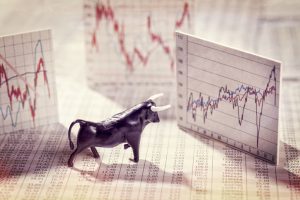“How Bull Markets End” — Wells Fargo Prepares Clients For Economic Downturn
The comments below are an edited and abridged synopsis of an article by Tyler Durden
A report from the Wells Fargo Investment Institute (WFII) examines the 126-month-old economic expansion, the longest in US history, along with one of the longest bull markets in the S&P500, up 350% in about a decade. The length of the economic expansion and the return in the stock market have recently caused fear among investors, signaling that the good times are about to end.

The report examines the relationship between equity bear markets and economic recessions, while studying warning signs that could mean it’s time for investors to start positioning for the next downturn.
A contraction in forward EPS is a significant threat to the S&P500 in the quarter ahead, and one of the main reasons why the total return on a year-over-year basis for the equity index has stalled.
Every bear market in the last five decades has seen a slump in S&P500 forward earnings. WFII notes that equity bear markets generally occur before economic downturns, and that large-cap equities often outperform many asset classes in the 12 months preceding a recession.
Risk factors that investors should monitor are yield curve inversions and political disruptions domestically, but also internationally. Others are high-yield corporate debt spreads, corporate debt levels, and Fed interest rate policy.
A predictor of economic turning points has been the Conference Board Leading Economic Index, in which the 12-month change dips below zero before a recession in seven of the past eight cycles; WFII lists several factors that suggest the bull-market peak maybe be imminent; and mounting headwinds in the domestic and global economy are likely ushering in the next bear market for stocks and the economy.
S&P500 forward EPS is likely to contract in the coming quarter and might not bottom until 2Q20. The slowdown in the domestic economy continues to gain momentum and might not trough until 4Q20. This means a severe repricing event could be nearing for risk assets.
